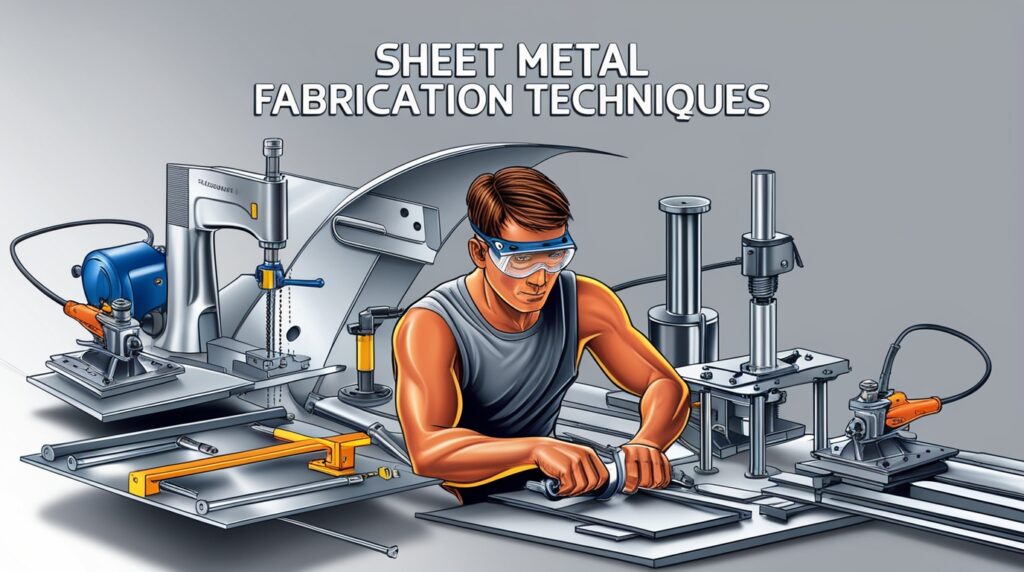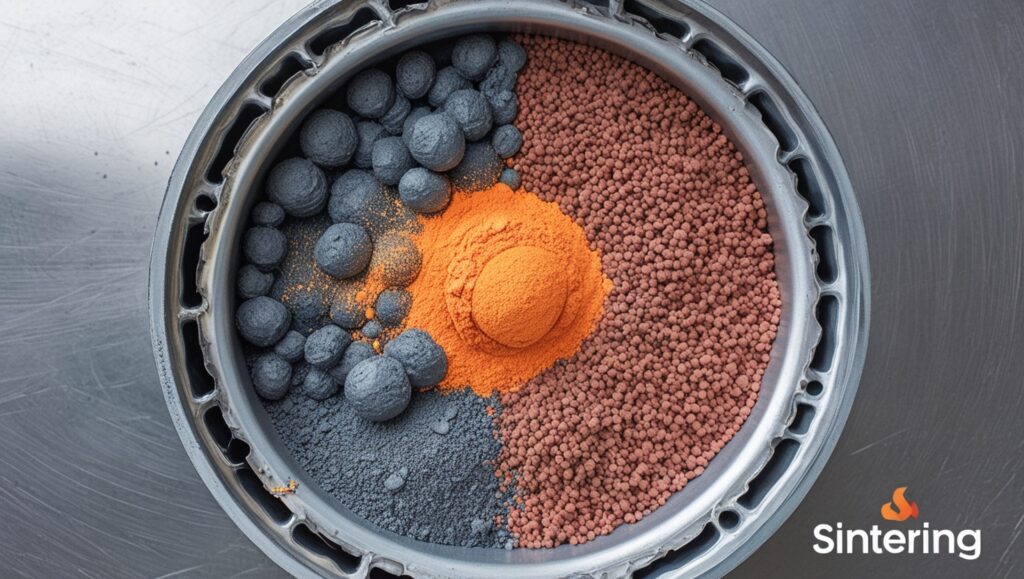
Introduction
Taper Turning Methods in Lathe refers to a set of machining techniques employed to create a tapered shape on a workpiece using a lathe machine. Taper turning is crucial in various manufacturing processes, particularly in industries such as automotive and aerospace, where components like axles, fittings, and turbine shafts require specific taper angles for proper functionality and assembly.
The Taper turning methods vary in complexity and precision, allowing operators to achieve desired tapers depending on the workpiece and application. The primary techniques for taper turning include the offset tailstock method, taper attachment method, and compound rest method, each offering distinct advantages and limitations. For instance, the offset tailstock method is favored for its simplicity in setup, while the taper attachment method allows for greater precision in high-stakes manufacturing environments.
Despite their advantages, each taper turning methods, also presents challenges, such as maintaining dimensional accuracy and achieving a smooth surface finish, which are critical for the integrity of the final product. Recent advancements in technology, particularly the integration of Computer Numerical Control (CNC) systems, have significantly enhanced the capabilities of taper turning operations. CNC lathes provide automated precision and repeatability, allowing for the machining of complex taper shapes with improved efficiency and reduced scrap production.
Nevertheless, the reliance on advanced tooling materials and techniques also introduces new challenges, including tool wear management and maintaining the durability of taper-turned components. Taper turning remains a prominent area of study and application within machining, as its techniques continue to evolve alongside advancements in manufacturing technology. Understanding the various methods and their implications is essential for machinists aiming to produce high-quality tapered components that meet the specific needs of modern engineering demands.
Overview of Lathe Machines
A lathe machine, often referred to as the “Mother of all Machines,” is a fundamental tool in part manufacturing that dates back to the 13th century in Egypt. It operates by holding and rotating a workpiece while stationary cutting tools remove material, shaping the workpiece according to specific product designs.
Functionality and Structure
The lathe machine functions by facilitating various machining operations, including turning, facing, and threading. It consists of several key components, including the headstock, tailstock, bed, spindles, motor, and tool rest. The headstock, located on the left, houses the main spindle that drives the workpiece, while the tailstock, positioned on the right, provides support and stability to the workpiece during operations. The bed serves as the base where all cutting tools are mounted, ensuring precision in machining tasks.
Types of Lathe Machines
Lathe machines can be classified into several types based on their functions and operational capabilities:
- CNC Lathes: These are automated machines that offer high precision and efficiency, making them suitable for complex designs and high-volume production.
- Speed Lathes: Ideal for lighter tasks, speed lathes are commonly used in woodworking due to their straightforward operation.
- Engine Lathes: Versatile machines that can handle a variety of applications, engine lathes are general-purpose and widely utilized in manufacturing.
- Turret Lathes: Designed for rapid tool changes, turret lathes excel in high-volume production scenarios, making them efficient for producing complex parts.
Applications
Taper turning methods in lathe operations are widely utilized across various industries for their ability to create precise and functional components.
Industrial Use Cases
Taper turning is primarily employed in the manufacturing of components that require specific taper angles, such as shafts, spindles, and fittings. The automotive industry often leverages taper turning techniques to produce tapered axles and transmission components, ensuring a precise fit and enhanced performance in assembly. Similarly, the aerospace sector relies on tapered parts for aerodynamics and weight reduction, making taper turning essential for aircraft components like landing gear and turbine shafts.
Tooling Techniques
To achieve high-quality taper turning results, operators often use specialized tools and techniques. Step-cutting techniques are frequently recommended to minimize tool stress and enhance surface finish, as these taper turning methods allow for incremental adjustments during the machining process. This is particularly crucial when working with hard materials, as it reduces the risk of tool wear and extends tool life, thereby maximizing efficiency and minimizing production costs.
Advanced Manufacturing
With the integration of Computer Numerical Control (CNC) technology, taper turning has seen significant advancements. CNC lathes enable the automation of taper turning operations, enhancing precision and repeatability. The use of advanced materials for tooling, such as carbide and ceramic composites, has further improved the capabilities of taper turning, allowing for machining of complex shapes and profiles that were previously challenging to achieve. Additionally, real-time monitoring of tool wear has become more feasible, reducing scrap production and increasing overall productivity.
Taper Turning Methods
Taper turning is a widely used operation on a lathe machine to create a tapered shape on a workpiece. There are several methods available for taper turning, each with its advantages and limitations.
Offset Tailstock Method
One of the simplest and most commonly employed techniques for taper turning is the offset tailstock method. In this approach, the tailstock is offset from the lathe’s centerline to achieve the desired taper angle. The workpiece is mounted between centers, and the tailstock is adjusted accordingly. This method is straightforward to set up and is particularly suitable for creating small tapers.
Taper Attachment Method
The taper attachment method involves using a specialized device that can be mounted onto the lathe machine. This attachment consists of a base, a guide bar, and a swiveling mechanism, which allows for precise control of the tool’s movement along the taper. By setting the appropriate taper angle on the attachment, the tool can be adjusted to move automatically, leading to accurate taper shapes. This method is particularly beneficial in industries requiring high precision.
Compound Rest Method
The compound rest method is ideal for creating larger tapers. In this method, the compound rest of the lathe is adjusted to the required angle for tapering. The tool is mounted on the compound rest, which is then set to the desired taper angle. This technique offers greater flexibility regarding taper angles and is often used for cutting long, shallow tapers.
Tool Method
The tool method is a simpler technique specifically designed for shorter tapers. It utilizes a broad-form tool with a straight cutting edge set at half the taper angle. The tool is fed straight into the workpiece, resulting in a tapered shape. However, this method can produce considerable vibration and requires significant force from the operator, making it less effective for longer tapers.
Combining Feeds Method
This more advanced technique requires a well-trained operator, as it combines both longitudinal and cross feeds to create a diagonal path for the cutting tool. This allows for high accuracy in tapering, which can be performed on both manual and CNC lathes. The success of this method relies heavily on precise control of the feed rates and the quality of the cutting tool being used.
Tailstock Set Over Method
The tailstock set over method is particularly useful when dealing with very shallow taper angles. The workpiece is positioned between live and dead centers, and the tailstock is adjusted laterally by half of the desired taper angle. This method is effective for achieving gradual tapers and is easy to set up.
Advantages and Disadvantages
Taper turning offers various advantages, including versatility across materials such as wood, plastic, and metal, as well as high precision with modern machinery. However, each method has its own set of limitations, including setup complexity and the potential for inaccuracies due to misalignment or improper tool settings. Selecting the appropriate method depends on the specific requirements of the project and the capabilities of the lathe being used.
Theoretical Principles in Taper turning Methods
Taper turning is an essential lathe operation that facilitates the transformation of a cylindrical workpiece into a tapered shape, where one end features a larger diameter than the other. This intricate process is driven by careful manipulation of angles and feed rates, allowing for precise taper creation based on the operator’s requirements.
Types of Taper Turning Methods
Several methods can be employed in taper turning, each with its specific applicability and limitations:
Tailstock Set-Over Method
This technique is primarily utilized for creating small top angles and is characterized by its precision in machining tapered profiles. The tailstock is adjusted at a slight angle to facilitate the tapering of external surfaces only, which restricts its use to applications where internal tapers are not required.
Compound Rest Method
The compound rest method is ideal for producing short, steep cones. In this approach, the compound rest is rotated to a specific angle, up to 45 degrees, which allows the workpiece to be held securely in the chuck while it is rotated along the lathe axis. This method enables the creation of more pronounced tapers than the tailstock set-over method, making it suitable for different machining scenarios.
Factors Affecting Taper Turning
Several factors influence the outcome of taper turning, including the angle of the cut, feed rate, and tool position:
Angle and Feed Rate
The angle adjustment is crucial as it determines the rate at which the diameter changes along the length of the workpiece. A steeper angle leads to a more rapid tapering, while a gentler angle yields a gradual transition. Additionally, controlling the feed rate relative to spindle speed ensures the desired rate of material removal, maintaining uniformity throughout the process.
Monitoring and Adjustments
Quality control during taper turning is vital. Operators must regularly monitor the machining process to check dimensions and surface finishes. This involves making necessary adjustments to feed rates, tool angles, or machine settings to correct any deviations, ensuring the final product meets the specified taper dimensions.
Tools and Accessories in Taper Turning Methods
Types of Taper Turning Tools
Taper Turning Attachment
The taper turning attachment is a crucial tool designed to enable the creation of tapered cuts on workpieces. This attachment holds the cutting tool at an angle relative to the lathe’s axis of rotation, allowing for gradual tapering along the workpiece length. The angle can be adjusted according to specific job requirements, making it highly versatile for manufacturing components like shafts and cones.
Lathe Cutting Tools
Lathe cutting tools are primarily categorized based on their material composition, which impacts their performance in taper turning operations.
High-Speed Steel (HSS)
HSS tools are affordable and versatile, suitable for moderate-speed lathing operations. While they provide good wear resistance, they are not ideal for high-speed machining and may require frequent tool changes.
Carbide Tools
Carbide lathe cutters are known for their exceptional hardness and durability. They maintain a sharp cutting edge at high temperatures, making them ideal for heavy-duty machining and cutting hard materials such as stainless steel. Although more expensive initially, their longevity makes them cost-effective for industrial applications.
Diamond Tools
Diamond cutting tools, while less common, offer superior performance in precision taper turning due to their extreme hardness and wear resistance. They are typically used in specialized applications where high precision is paramount.
Additional Accessories for Enhanced Precision in Taper Turning Methods in Lathe Machine
Measurement and Calibration Tools
Accurate measurement is critical in taper turning. Tools such as micrometers, calipers, and dial indicators are essential for ensuring that the taper attachment is correctly set up. Regular calibration is necessary to maintain precision over time.
Safety and Dexterity Considerations
A solid understanding of safety protocols and manual dexterity is crucial for effective taper turning. Machinists must handle machinery correctly and recognize potential hazards to prevent accidents, as well as demonstrate good hand-eye coordination for making fine adjustments during machining.
Advanced Tooling Techniques
Recent advancements in tool geometry and materials have further improved taper turning operations. The use of high-performance carbide grades, ceramics, and specialized coatings like TiAlN (Titanium Aluminum Nitride) has enhanced the mechanical properties of cutting tools, making them more effective and durable. These advancements contribute to higher efficiency and precision in machining operations, ensuring optimal results in taper turning applications.
Challenges and Solutions
Taper turning is a machining process that presents several challenges, which, if not addressed, can lead to issues in achieving the desired product quality. Understanding these challenges and implementing effective solutions is crucial for successful taper turning operations.
Dimensional Accuracy
Maintaining dimensional accuracy throughout the taper’s length is a primary challenge in taper turning. Inaccuracies can arise from tool deflection, misalignment, or machine wear, leading to undesired dimensions. To combat this, machinists should conduct regular calibrations of machines and utilize precision tools. A systematic setup and monitoring approach can help ensure that the taper maintains its specifications.
Surface Finish
Achieving a smooth surface finish is another significant challenge. Factors such as tool wear, cutting speed, and the application of coolant can influence the quality of the surface finish. Experts recommend applying coolant directly to the cutting edge to improve heat management, chip evacuation, and overall surface quality. By employing high-pressure coolant systems and selecting the appropriate cutting tools, machinists can mitigate surface finish issues.
Tool Chatter and Deflection
Tool chatter and deflection during cutting can adversely affect the taper’s finish and accuracy. These phenomena are often caused by improper tool setup or inappropriate machining parameters. To minimize chatter, it is essential to select the right tool geometry and to optimize spindle speeds and feed rates. Additionally, ensuring a rigid setup can help stabilize the cutting process.
Durability of Taper-Turned Products
The durability of taper-turned components can be compromised by external environmental factors, mechanical stresses, and inadequate maintenance practices. Regular inspections and maintenance are vital for enhancing product longevity. Implementing protective measures against harsh operating conditions can also play a significant role in sustaining durability.
Tool Wear Management
Tool wear is a leading issue in taper turning, affecting both efficiency and cost. Factors contributing to excessive wear include improper speeds and feeds, poor chip evacuation, and inappropriate tool materials. Understanding these factors is crucial for efficient machining. Machinists can extend tool life by optimizing machining parameters, using suitable tool coatings, and regularly monitoring tool conditions.




Thank you for the good writeup It in fact was a amusement account it Look advanced to far added agreeable from you However how could we communicate
Hi, I’m Jack. Your website has become my go-to destination for expert advice and knowledge. Keep up the fantastic work!